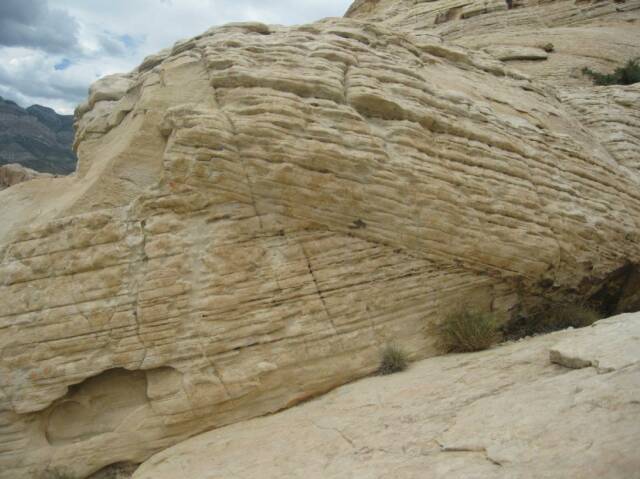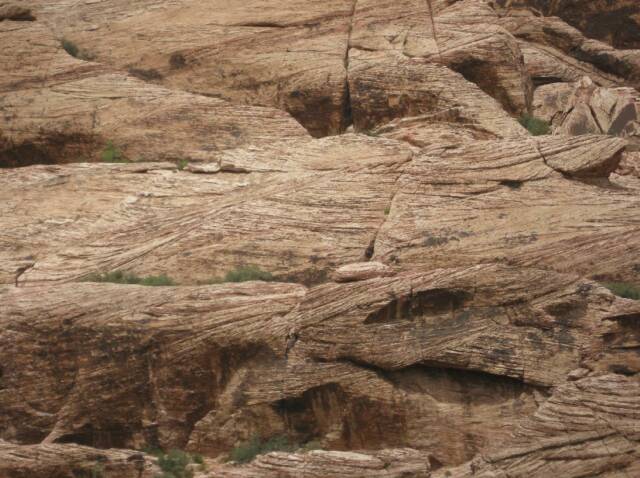Cross-Stratification
(Cross-Bedding)

Photographed by Michael A. Klimetz
Aztec Sandstone
[Lithified Dunes]
Jurassic
Red Rock Canyon National Conservation Area
Clark County
NEVADA

Photographed by Michael A. Klimetz
Aztec Sandstone
[Lithified Dunes/Hematitic]
Jurassic
Red Rock Canyon National Conservation Area
Clark County
NEVADA
Cross-stratification (or cross-bedding) refers to variably inclined surfaces in an otherwise horizontal unit of (primarily) sedimentary rock. When encountered in sedimentary rock strata, these inclined surfaces bound clastic deposits related to bedforms such as ripples and dunes. Hence, these surfaces indicate that deposition occurred under the influence of a flowing fluid (either water or wind). This is a case in geology when original depositional layering is not in compliance with the Law of Original Horizontality, and that the tilting is not a result of post-depositional deformation. Sediment grains either track or saltate up the windward/upstream (or stoss) side of a dune, and then tumble down the leeward/downstream (or lee) side. Cross-bedding can form in any environment in which a fluid flows over a bed with transportable particles. The transportability of a particle is directly related to the type and speed of the agent of transport. It is most common in stream deposits (consisting of sand and gravel), tidal areas, and in aeolian (wind swept) dunes. Cross-bedded sediments and sedimentary rocks are easily recognized in the field by the many layers of "foresets", which are the series of layers that form on the lee side of the bedform. These foresets are individually differentiable because of small-scale separation between layers of material of different sizes and densities. Cross-bedding can also be recognized by truncations in sets of ripple foresets, where previously-existing stream deposits are eroded by a later flood, and new bedforms are deposited in the scoured area.
The direction of motion of the cross-beds can yield flow or wind directions at the time of deposition. The surfaces of foresets are deposited at an angle of repose which, when strike and dip are precisely measured, permits determination of the paleoflow direction. This is valuable in interpreting climate and drainage patterns at the time of deposition. Sand dunes preserve the prevalent wind directions, and current ripples provide the direction of water flow.